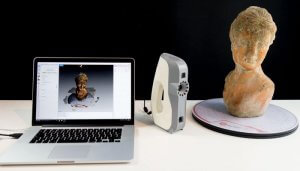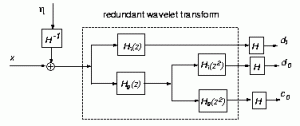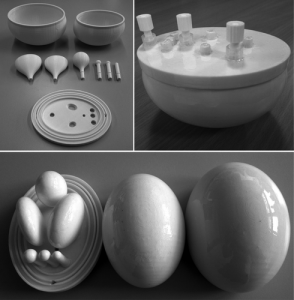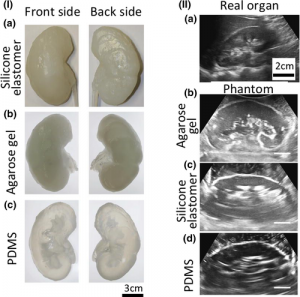Art Restoration and 3D Printing
Through this metrology series, I hope readers are making this realization: We as humans have faulty perception, and we try to understand our world as precisely as we can. The tools we use to measure items within our world are prone to error, but they do the best they can to reveal the essence of reality. The common adage is that a picture says a thousand words. If one has a blurry or weak picture, the words said are mostly confusing. Devices that take images can be used for metrology purposes as we have discussed earlier. The data that we capture in forms of images is necessary for high resolution and precise metrology methods. How do we make sure that images are giving us words of clarity vs. confusion?
Image restoration is the operation of taking a corrupt or noisy image and estimating the clean, original image. Corruption may come in many forms such as motion blur, noise, and camera misfocus. Image restoration is different from image enhancement in that the latter is designed to emphasize features of the image that make the image more pleasing to the observer, but not necessarily to produce realistic data from a scientific point of view.
Certain industries are heavily reliant on imaging. An example of the interdisciplinary nature of imaging and metrology is found in the medical sector. Biomedical imaging techniques need to be extremely precise for accurate measurements of internal organs and structures. Size, dimensionality, and volume are items that need high precision due to their affect on human life. Without proper images of these items, doctors and physicians would have a difficult time in giving proper diagnoses. Another important caveat to remember is the ability to replicate these structures through the use of 3D printing. Without accurately measured dimensions from 2D images, there would be a lack of precision within larger 3D models based off of these 2D images. We have talked about image stitching and 3D reconstruction previously. This is especially important within the medical field in the creation of 3D printed phantoms.
One can apply the same concept and thought process to the automotive industry. The automotive industry is all about standardization and replicability. There needs to be a semi-autonomous workflow ingrained within the production line of a vehicle. 3D scans are taken of larger parts that have been fabricated. With these original scans, replicability within production is possible. There still lies a problem of precision within an image. There are a lot of variables that may cause a 3D scan to be unreliable. These issues include reflective or shiny objects, objects with contoured surfaces, soft surfaced objects, varying light color, opaque surfaces, as well as matte finishes or objects. It is obligatory that a 3D scan is done in an environment with great lighting. With all of these issues, image restoration is essential with any scan because it is nearly impossible to have a perfect image or scan. Within the automotive industry, the previous problems are very apparent when scanning the surface of an automotive part.
There are 4 major methods to image restoration that I will highlight here, but will expand upon within further articles.
Inverse filtering is a method from signal processing. For a filter g, an inverse filter h is one that where the sequence of applying g then h to a signal results in the original signal. Software or electronic inverse filters are often used to compensate for the effect of unwanted environmental filtering of signals. Within inverse filtering there is typically two methodologies or approaches taken: thresholding and iterative methods. The point of this method is to essentially correct an image through a two way filter method. Hypothetically if an image is perfect, there will be no visible difference. The filters applied will correct any errors within an image though.
In signal processing, the Wiener filter is a filter used to produce an estimate of a desired or targeted random process through linear time-invariant filtering of an observed noisy process, assuming certain conditions are constant such as known stationary signal and noise spectra, and additive noise. This is a method that is focused on statistical filtering. This necessitates time-invariance because adding time into this process will ultimately cause a lot of errors.
Wavelet-based image restoration
Wavelet-based image restoration is applying mathematical methods that allow for an image and its data to be compressed. With this compression, the ability to process and manipulate an image becomes a bit more manageable. Transient signals are best for this type of method. A transient signal refers to a short-lived signal. The source of the transient energy may be an internal event or a nearby event. The energy then couples to other parts of the system, typically appearing as a short burst of oscillation. This is seen in our readily available ability to capture a picture or image within a specific time frame.
Blind deconvolution is a technique that permits recovery of the target scene from a single or set of “blurred” images in the presence of a poorly determined or unknown point spread function(PSF). The point spread function (PSF) describes the response of an imaging system to a point source or point object. A more general term for the PSF is a system’s impulse response, the PSF being the impulse response of a focused optical system. Regular linear and non-linear deconvolution techniques utilize a known PSF. For blind deconvolution, the PSF is estimated from the image or image set, allowing the deconvolution to be performed.
We will be taking a deeper dive into this subject matter soon. As one can tell, there lies a vast amount of information and interesting technology and knowledge to be further understood. Through writing and experimentation with code, hopefully, I can show these things as well.
The post What is Metrology Part 14: Image Restoration appeared first on 3DPrint.com | The Voice of 3D Printing / Additive Manufacturing.








